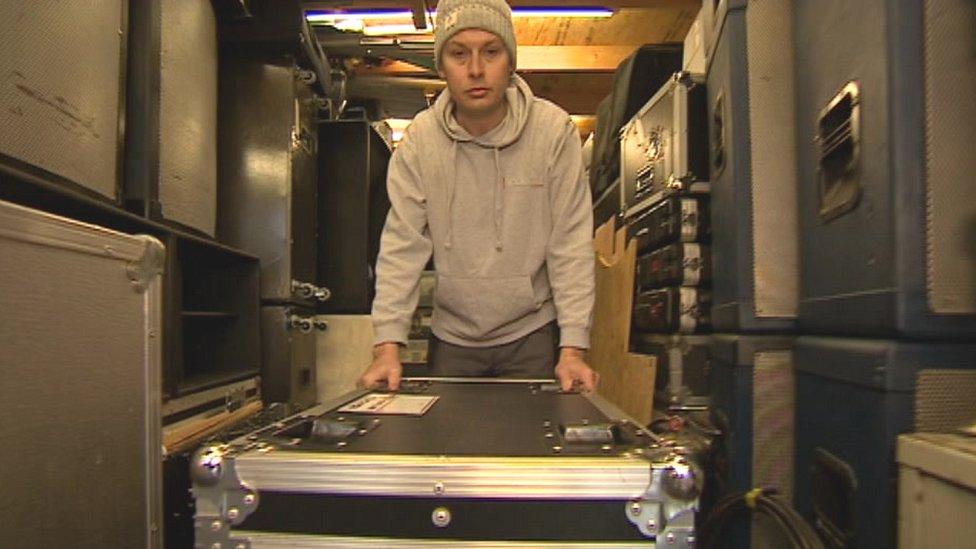Birmingham CAZ: Pollution levels drop as cars increase
- Published
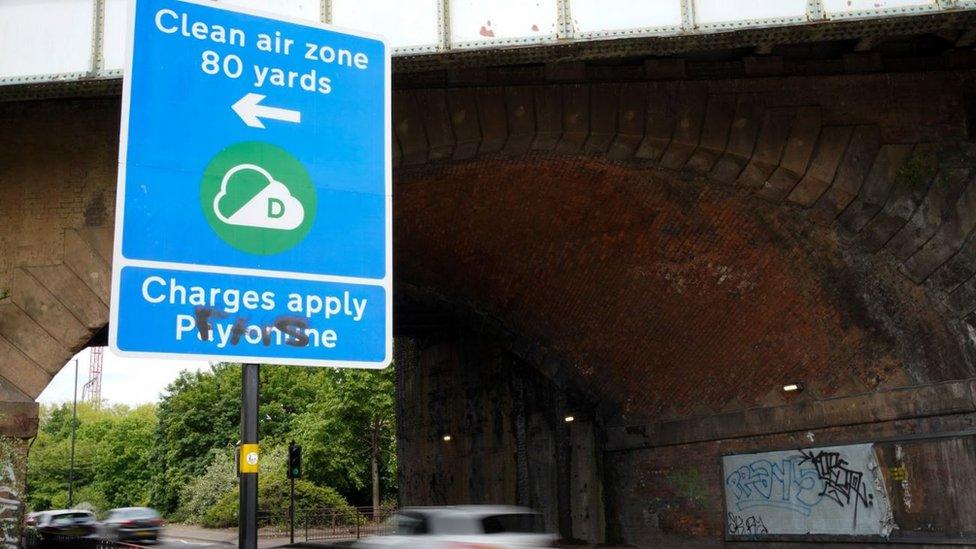
There are still "hot spots" of pollution which Birmingham City Council will have to address
Birmingham's Clean Air Zone (CAZ) has reduced pollution in the city by 17% despite an increase in the number of vehicles entering it.
That is according to the latest report by the city council which runs the scheme.
Despite the improvement there are still localised areas where levels of pollution break legal limits.
Working out what to do about these "hot spots" could have useful lessons for areas facing similar problems.
The CAZ was set up two years ago primarily to tackle high levels of nitrogen dioxide (NO2) produced by vehicles in the city.
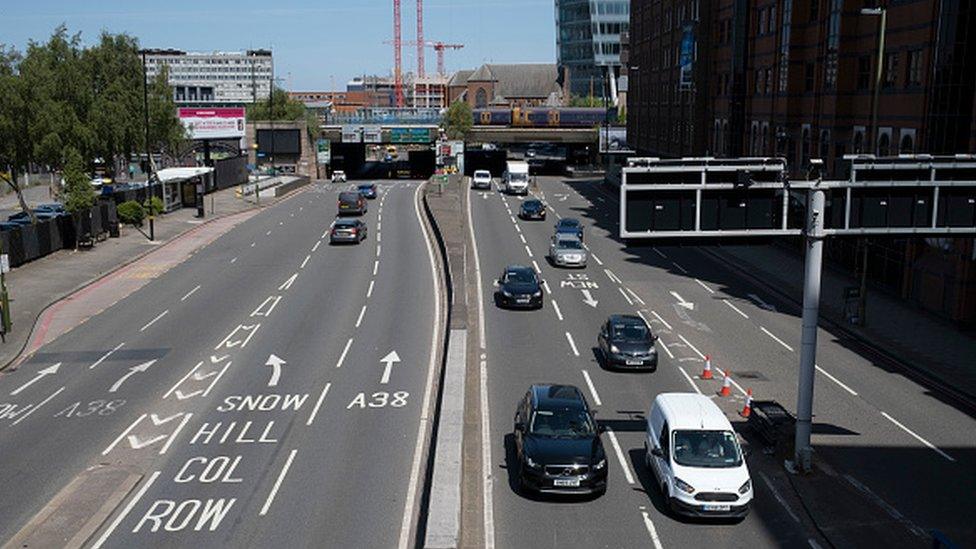
The scheme has reduced pollution in the city by 17%, according to council figures
Drivers of diesel cars manufactured before 2015 and petrol cars made before 2006 have had to pay an £8 daily fee to drive inside the A4540 Middleway ring road.
The measure is targeted at older, more polluting vehicles and, according to data published on Friday, seems to have worked.
Pollution is down and more and more vehicles coming into the city meet the CAZ standards as people replace older vehicles that attract a charge.
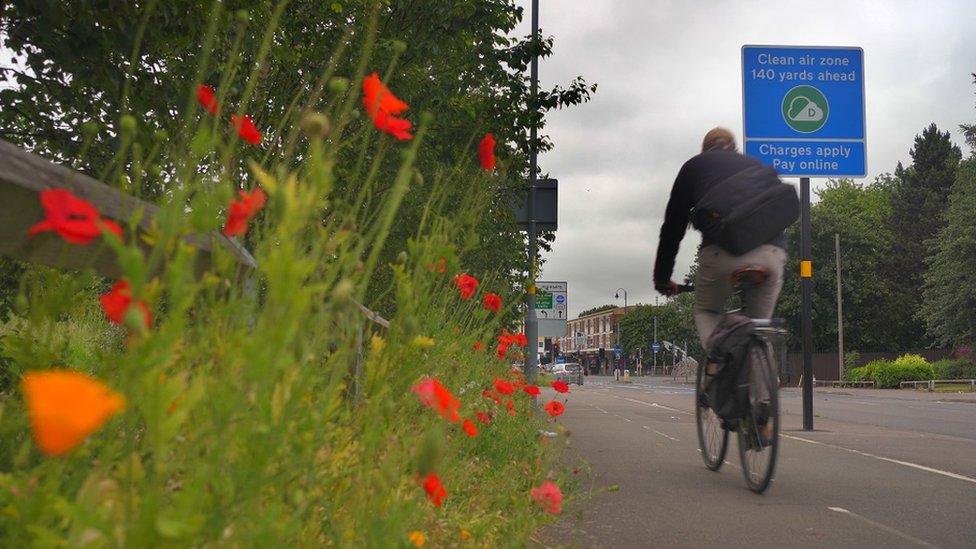
The Clean Air Zone has been in force since 2021
The benefits of improving air quality are being felt not just in the city centre, where the zone is located, but also outside it.
And there has been no sign of pollution increasing on the edges of the zone as older vehicles "rat-run" around the edges.
However, as levels of pollution have decreased, the network of air-quality monitors on our streets have revealed hot spots where levels of NO2 are still above legal limits.
These include:
The area around Moor Street station: This is a busy stretch of road which is restricted to buses only. The report shows almost all the buses in the city are compliant with CAZ standards but the sheer volume of them seems to be causing problems.
Around St Chads Cathedral: Another busy stretch of the city with up to eight lanes of traffic and a gradient where engines have to work even harder. Here too it is the sheer amount of traffic that seems to be the issue.
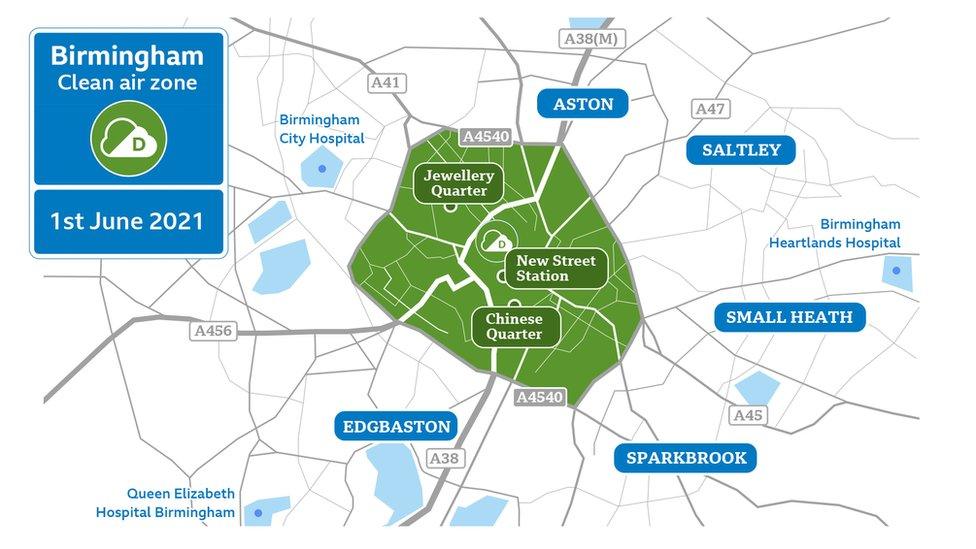
The zone covers the area within Birmingham's ring road
The council is now investigating these hot spots further and working out what action it can take. It may well be we are reaching the limit of the improvements the CAZ can create, and in these problem places, action will have to be taken to reduce the amount of traffic instead.
Meanwhile, the scheme is raising more money than the council expected.
Despite the current financial issues Birmingham City Council faces, this cash is ring-fenced and must be spent on active travel plans such as cycle lanes, railway station improvements and a hydrogen bus trial.
It is unclear how long this focus will last in the current political climate.

Follow BBC West Midlands on Facebook, external, X, external and Instagram, external. Send your story ideas to: newsonline.westmidlands@bbc.co.uk, external
Related topics
- Published21 September 2023

- Published31 August 2023
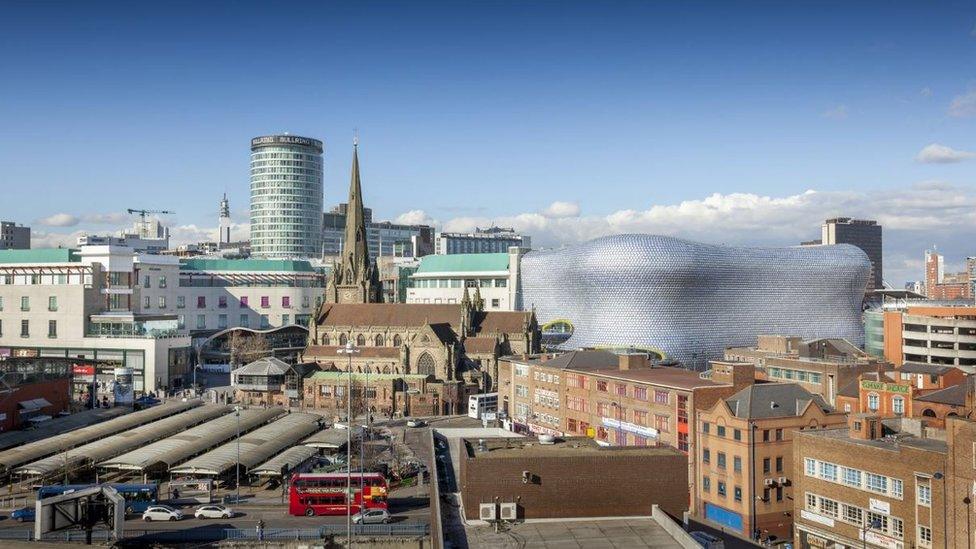
- Published1 June 2022
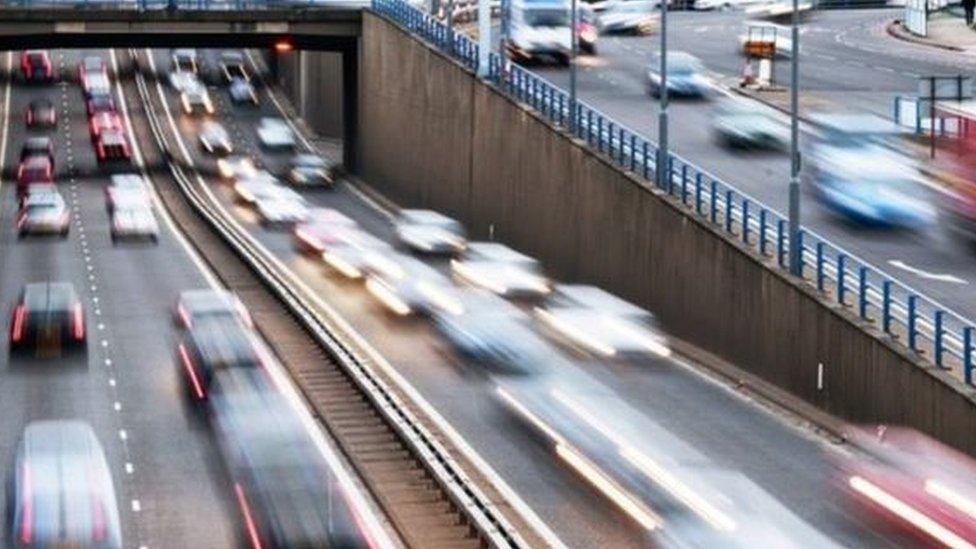
- Published31 May 2023

- Published15 February 2022
